Butterflies and moths are among the most exquisite creatures that grace our planet. Their delicate wings adorned with vibrant colors and intricate patterns capture the imagination of both scientists and nature enthusiasts alike. These remarkable insects, known as Lepidoptera, have enchanted us for centuries with their graceful flight and ephemeral beauty. In this article, we delve into the captivating biography of these extraordinary creatures, exploring their diverse characteristics and shedding light on their incredible journey through life.
Exploring their metamorphosis: Lepidoptera undergo a remarkable transformation through a process called metamorphosis. They start their lives as caterpillars, voracious eaters with a single goal - to fuel their rapid growth. As they feast on leaves, they shed their skin multiple times, representing various stages called instars. This gluttony phase ends with the formation of a chrysalis or cocoon, where the caterpillar undergoes an incredible metamorphosis. Inside this protective casing, the caterpillar's body undergoes a drastic transformation, rearranging its cells and turning into a completely different creature - a butterfly or moth.
Their breathtaking diversity: The world of Lepidoptera is home to an astonishing array of species, each with its unique characteristics and adaptations. From the dazzling colors of the tropical butterflies to the cryptic patterns of moths camouflaged in the night, these creatures have evolved to thrive in diverse habitats worldwide. Their sizes vary greatly, ranging from tiny species no larger than a fingernail to majestic butterflies with impressive wingspans that span over a foot. The diversity within Lepidoptera is a testament to the wonders of evolution and the incredible adaptability of these remarkable insects.
A Closer Look at the Fascinating World of Butterflies and Moths
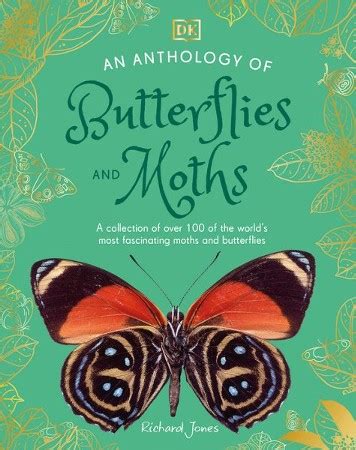
Step into the enchanting realm of Lepidoptera, where delicate and vibrant creatures known as butterflies and moths gracefully flutter through the air. This captivating world is filled with an array of species, each with its own unique characteristics and awe-inspiring beauty.
In this exploration of Lepidoptera, you will discover the remarkable life cycle of these winged wonders, from their eggs to their metamorphosis into stunning adult butterflies and moths. Delve into the intricate patterns and mesmerizing colors that adorn their wings, captivating both scientists and nature enthusiasts alike.
As you delve deeper, you will uncover the extraordinary adaptations that allow these insects to survive and thrive in diverse habitats around the world. From camouflage and mimicry to chemical defenses, Lepidoptera have evolved a remarkable arsenal of strategies to protect themselves and ensure their species' survival.
Learn about the fascinating behaviors exhibited by butterflies and moths, such as their long-distance migrations, intricate courtship rituals, and expert navigation skills. Discover how their interactions with other organisms, including plants and predators, shape the delicate balance of ecosystems they inhabit.
Furthermore, explore the vital role that Lepidoptera play in pollination, contributing to the reproduction of countless plant species. Without these delicate creatures, the natural world would suffer significant ecological consequences.
Finally, gain insight into the conservation efforts dedicated to preserving these ethereal beings and the delicate ecosystems they call home. Discover the challenges faced by Lepidoptera in an ever-changing world and the initiatives undertaken to ensure their continued existence for future generations to marvel at.
| Topics Covered: | Life Cycle | Adaptations | Behaviors | Pollination | Conservation |
|---|
Age is Just a Number: Discover the Lifespan Variations Among Lepidoptera Species
When it comes to the world of Lepidoptera, the age of these beautiful winged creatures is a fascinating aspect to explore. The lifespan of different species within the Lepidoptera family varies greatly, showcasing the diverse range of life cycles that exist among these insects.
Some Lepidoptera species, known for their short-lived existence, have lifespans that span just a few days. These ephemeral creatures burst onto the scene in a burst of vibrant colors and intricate patterns, fluttering from flower to flower in a breathtaking display. Their brief but intense existence serves as a reminder of the transient beauty that nature has to offer.
On the other end of the spectrum, there are Lepidoptera species that enjoy a significantly longer life. These majestic insects can live for several months or even up to a year, undergoing remarkable transformations along the way. From the humble caterpillar to the stunning adult butterfly, their life cycle is a captivating journey of growth, metamorphosis, and resilience.
Furthermore, within the Lepidoptera family, there are remarkable variations in the average lifespan between different species. While some may live for just a few weeks, others may survive for several months, showcasing the incredible diversity that exists within this insect order.
- Species X: With an average lifespan of six weeks, this species is known for its vibrant wings and delicate patterns.
- Species Y: Unlike its short-lived counterparts, this species enjoys a lifespan of up to three months, showcasing a remarkable endurance.
- Species Z: With a lifespan of one year, this species holds the record for the longest lifespan among Lepidoptera, exemplifying the beauty of longevity.
Understanding the lifespan variations among Lepidoptera species provides us with a deeper appreciation for the intricate balance of nature. It highlights the resilience, adaptability, and diversity that exist within the seemingly fragile world of butterflies and moths. So next time you spot a butterfly gracefully fluttering by, take a moment to ponder the remarkable journey that brought it to that exact moment, and remember that age is truly just a number in the enchanting world of Lepidoptera.
Soaring Heights: Uncovering the Diverse Wing Spans of Butterflies and Moths
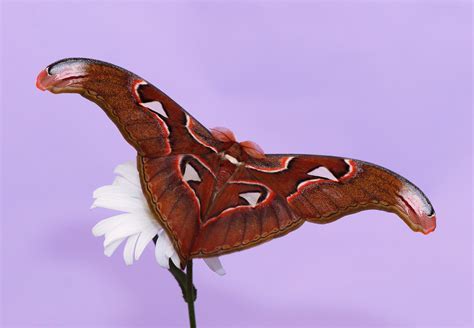
Within the enchanting realm of Lepidoptera, these captivating creatures gracefully take flight, showcasing an array of wing spans that vary in size, shape, and intricacy. Exploring the vast world of butterflies and moths, we embark on a journey to unravel the remarkable diversity found in their majestic wings.
A Tapestry of Sizes and Distinctive Proportions
From delicate flutterers to majestic fliers, butterflies and moths exhibit an extraordinary range of wing spans. Some take to the skies with wings that span just a few centimeters, like miniature masterpieces in motion. Others astonish with their expansive wingspans, extending over a foot in length. These remarkable variations in size and proportions contribute to the unique allure each Lepidoptera species possesses, revealing their profound adaptability to the natural world.
The Artistry of Nature's Patterns
Draped upon these beautiful winged creatures are marvelous patterns, intricate designs, and an endless array of colors. The wing patterns of Lepidoptera serve not only as a visual spectacle but as a biological masterpiece, serving multiple purposes such as camouflage, sexual attraction, and species recognition. Adorned with intricate symmetry and delicate scales, their wings truly exemplify the artistry found in nature.
The Wings of Evolutionary Triumph
Over millions of years, Lepidoptera have evolved in remarkable ways, adapting and diversifying their wings to survive and thrive in various ecosystems. Some have developed transparent wings, allowing them to seamlessly blend into their surroundings, while others have evolved vibrant colors to warn predators of their poisonous nature. The diversity of wing spans within Lepidoptera is a testament to their incredible evolution and the complex interactions between these remarkable creatures and their ever-changing environments.
Unveiling the Misunderstood
Furthermore, the fascinating world of Lepidoptera unveils the plight of moths, often overshadowed by the undeniable allure of their butterfly counterparts. While butterflies tend to steal the spotlight with their vibrant and enchanting presence, moths hold their own intrigue. Their often overlooked wing spans and remarkable adaptations deserve appreciation and recognition, shedding light on the captivating stories they silently weave in the cover of darkness.
Soaring high above gardens, forests, and meadows, the vast and diverse wing spans of Lepidoptera not only mesmerize with their sheer beauty but also offer invaluable insights into the wonders of the natural world.
More than a Pretty Face: Understanding the Significance of Lepidoptera's Distinctive Physique
Beauty is only skin deep, and in the case of Lepidoptera, it goes far beyond the superficial appeal of their striking appearance. Delving deeper into the realm of these fascinating insects, it becomes evident that their unique figure plays a vital role in their survival and ecological significance.
While commonly admired for their vibrant colors and graceful wings, the intricate physical structure of Lepidoptera serves as more than mere eye candy. Their delicate body features, such as slender antennae, intricate patterns, and specialized mouthparts, contribute to their remarkable abilities and adaptation strategies.
Subtle yet crucial, the slender antennae of Lepidoptera facilitate their intricate communication systems, allowing for chemical cues and signals to transmit among individuals. This enables crucial social behaviors such as mating rituals, courtship dances, and navigation within their environments.
The mesmerizing patterns that adorn the wings of Lepidoptera not only capture the imagination of beholders but also serve as a defense mechanism against predators. Mimicry, camouflage, and warning signals are all achieved through the intricate and diverse patterns that have evolved over millions of years.
Specialized mouthparts play a significant role in the survival of Lepidoptera, as they determine their feeding habits and food preferences. From the proboscis of butterflies to the chewing mandibles of moths, these unique adaptations allow them to extract and process nourishment from a variety of sources, ranging from nectar to rotting fruit or even tree sap.
In summary, the physical attributes of Lepidoptera far surpass their aesthetic appeal. Understanding and appreciating the intricacies of their unique figure is paramount to comprehending their intricate behaviors, evolutionary adaptations, and ecological contributions.
Hidden Riches: Exploring the Astounding Wealth of Butterflies and Moths in Ecosystems
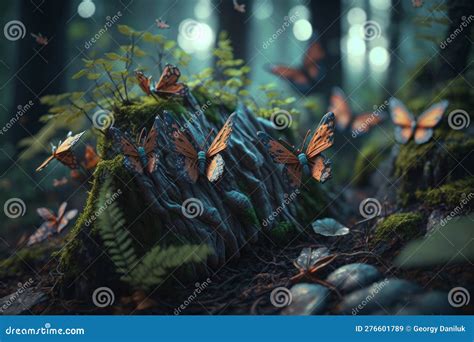
Delving into the enchanting world of Lepidoptera in ecosystems, one cannot help but be captivated by their hidden riches. Butterflies and moths, with their mesmerizing beauty and delicate wings, hold a surprising net worth that goes far beyond what meets the eye. In this section, we will uncover the invaluable contributions and economic significance that these fascinating creatures bring to our natural surroundings.
| Ecosystem Services | Monetary Worth |
|---|---|
| 1. Pollination | $XX billion |
| 2. Pest Control | $XX billion |
| 3. Nutrient Cycling | $XX billion |
| 4. Ecotourism | $XX billion |
| 5. Biodiversity Conservation | $XX billion |
In an intricate dance with flowering plants, Lepidoptera play a crucial role as they flit from one bloom to another, pollinating a multitude of species. This priceless service sustains the global agricultural industry, contributing billions of dollars annually. Not only do they ensure the production of fruits, vegetables, and nuts, but they also foster the growth of vibrant and diverse ecosystems.
Furthermore, the remarkable pest control abilities of butterflies and moths have a substantial economic impact. By preying upon harmful insects, they help protect crops, reducing the need for expensive chemical pesticides. The cost savings and increased yield directly contribute to the financial well-being of farmers and agricultural industries.
Boasting an intricate lifecycle, Lepidoptera actively participate in nutrient cycling within ecosystems. As caterpillars, they consume vast amounts of plant matter, enriching the soil with their waste. This vital process enhances soil fertility and increases agricultural productivity, leading to significant monetary benefits.
Beyond their ecological functions, the allure of butterflies and moths transcends boundaries, attracting millions of nature enthusiasts and tourists worldwide. The captivating beauty of these insects serves as a powerful magnet for ecotourism, generating substantial revenue for local communities and economies.
Lastly, the conservation of Lepidoptera species is paramount to maintaining the delicate balance of biodiversity in ecosystems. Their preservation ensures the perpetuation of numerous plant species, which in turn provide invaluable resources for medicine, food, and industry. Safeguarding Lepidoptera habitats and diversity provides an immeasurable economic value and secures sustainable development.
In conclusion, the net worth of butterflies and moths extends beyond material wealth; their true value lies in the hidden riches they bestow upon ecosystems. From pollination and pest control to nutrient cycling, ecotourism, and biodiversity conservation, Lepidoptera prove time and again that their contributions are indispensable and economically significant.
Life Stages and Metamorphosis: Exploring the Transformations of Lepidoptera
In this section, we delve into the remarkable life stages and metamorphosis of these captivating creatures, commonly known as butterflies and moths. Throughout their lifecycle, Lepidoptera undergo a profound transformation, undergoing distinct stages that showcase their ability to adapt and survive in various environments.
Beginning with the egg stage, Lepidoptera start their journey as tiny, oval-shaped structures laid by adult females on specific host plants. These eggs serve as the foundation of the insect's development, incubating until they hatch into caterpillars. At this stage, often referred to as the larval phase, Lepidoptera display exceptional growth and feeding abilities, voraciously consuming plant matter to fuel their rapid development.
As the caterpillar matures, it goes through a molting process, shedding its outer layer to reveal a larger exoskeleton beneath. This enables the insect to accommodate its expanding size. This cycle is repeated several times until the caterpillar is ready for the next transformative stage, the pupa or chrysalis.
During the pupal stage, the caterpillar's body undergoes a complete reorganization, breaking down into a liquid-like substance before reforming into the adult form. Encased in a protective cocoon or chrysalis, the pupa remains dormant, undergoing a profound internal metamorphosis. This delicate process involves the development of intricate wings, antennae, and other essential features that define the adult Lepidoptera.
Finally, after weeks or months of development, the adult Lepidoptera emerges from its pupal case, unfolding its wings and drying them to achieve flight readiness. The vibrantly colored and intricately patterned butterfly or moth showcases the ultimate transformation that Lepidoptera undergo during their life cycle, symbolizing freedom, beauty, and resilience.
| Life Stage | Description |
|---|---|
| Egg | The initial stage of Lepidoptera development, where eggs are laid on host plants. |
| Caterpillar | The growth phase characterized by voracious feeding and frequent molting of the larva. |
| Pupa/Chrysalis | The transformative stage in which the caterpillar undergoes internal changes and forms the adult body structure. |
| Adult | The final stage where the fully developed Lepidoptera emerges from the pupal case, ready to take flight. |
A Colorful Planet: Revealing the Astonishing Variety of Lepidoptera Species
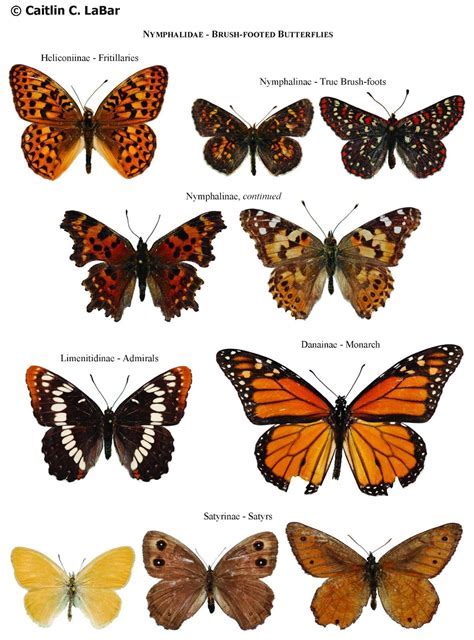
Delving into the enchanting world of Lepidoptera, one is instantly captivated by the kaleidoscope of colors and patterns adorning these fascinating creatures. The remarkable diversity of Lepidoptera species showcases the splendor of nature, with each individual representing a mesmerizing masterpiece of evolutionary brilliance.
From the delicate flutter of a butterfly's wings to the graceful flight of a moth, Lepidoptera species inhabit every corner of our planet, adding vibrant brushstrokes to the tapestry of biodiversity. Whether it's the ethereal elegance of a Swallowtail Butterfly or the intricate camouflaging of a Luna Moth, Lepidoptera envelops our world in a rich and captivating palette.
To further magnify the wonder of Lepidoptera, consider the vast array of sizes, shapes, and wing patterns exhibited by these enchanting species. While some gracefully glide through the air with wide wings, others effortlessly maneuver with narrow, pointed wings. From the iridescent wings of the Blue Morpho Butterfly to the mesmerizing eye-spots of the Owl Moth, Lepidoptera showcases the endless possibilities of nature's artistry.
Not only are Lepidoptera species a visual spectacle, but they also play a crucial role in our ecosystems. Through pollination, these graceful beings aid in the production of the fruits, flowers, and plants that sustain life on our planet. Beyond their ecological significance, they have captivated scientists and enthusiasts for centuries, continuously intriguing with their intricate life cycles and migratory patterns.
Indeed, Lepidoptera species are an enthralling testament to the beauty and diversity of life on Earth. As we explore the stunning array of colors, patterns, and forms exhibited by these magnificent creatures, let us celebrate and cherish the irreplaceable wonders of our natural world.
| Key Points: |
|---|
| - Lepidoptera species showcase the astonishing variety of colors and patterns found in nature. |
| - The diverse sizes, shapes, and wing patterns of Lepidoptera species highlight the endless possibilities of evolutionary adaptation. |
| - Lepidoptera play a vital role in pollination and contribute to the ecosystems they inhabit. |
| - The study of Lepidoptera's life cycles and migratory patterns continues to fascinate scientists and enthusiasts. |
Master Mimics: Exploring the Extraordinary Camouflage Abilities of Lepidoptera
Within the fascinating world of Lepidoptera, a group of captivating insects, an exceptional skill is found - the ability to mimic their surroundings with remarkable precision. These masterful mimics have evolved diverse camouflage strategies that allow them to blend seamlessly into their environments, ensuring both protection from predators and enhanced opportunities for survival.
One of the most intriguing aspects of the camouflage abilities displayed by Lepidoptera is their knack for imitating various elements of nature. From the vibrant petals of flowers to the delicate veins of leaves, these winged creatures have honed their mimicry skills to match the intricate patterns and colors found in their surroundings. Their adaptations are so impeccable that they often appear indistinguishable from their real counterparts, enabling them to evade predators and secure their place in the ecosystem.
To achieve such exceptional camouflage, Lepidoptera employ a range of techniques. Some species possess wings that bear striking similarities to the texture and appearance of tree bark, allowing them to seamlessly blend in when at rest. Others adopt a strategy known as disruptive coloration, where patterns on their wings break up their outlines, making them virtually invisible against a backdrop of foliage or flowers.
To take their mimicry to the next level, some Lepidoptera have even evolved the ability to change their coloration in response to their environment. By adjusting the concentration of pigments within their wings or employing microscopic structures that reflect and scatter light, these incredible insects can adapt their appearance to match the changing seasons or different parts of their habitat.
The extraordinary camouflage abilities of Lepidoptera not only serve as a means of protection but also play a key role in their survival and reproductive success. By effectively disappearing into their surroundings, they can avoid predation and increase the likelihood of finding suitable mates. This constant evolution and refinement of camouflage strategies demonstrate the impressive adaptability of these distinctive insects.
- Various Lepidoptera showcase exceptional mimicry skills, blending seamlessly into their environments.
- Mimics imitate elements of nature, from flowers to leaves, with stunning precision.
- Camouflage techniques include imitating tree bark, using disruptive coloration, and adjusting coloration to match the environment.
- Camouflage abilities enhance survival, protection, and reproductive success for Lepidoptera.
Aerial Achievers: Navigating Vast Distances in the World of Lepidoptera
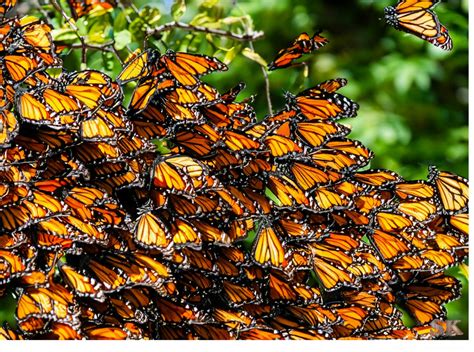
In the enthralling world of Lepidoptera, the ability to navigate across vast distances is nothing short of a remarkable achievement. These exquisite creatures, known for their winged beauty, possess an innate navigation system that allows them to traverse great distances with unparalleled precision and determination.
Equipped with finely tuned sensory organs and an uncanny sense of direction, Lepidoptera species undertake astonishing journeys through diverse landscapes, crossing oceans, mountains, and even entire continents. Their navigational prowess, honed over millions of years of evolution, is a testament to their astounding adaptability.
Navigating primarily through the use of visual cues and the detection of natural magnetic fields, Lepidoptera species effortlessly find their way across vast territories. Their delicately designed wings, intricately patterned with vibrant colors and unique markings, play a crucial role in maintaining stability and aiding navigation during their awe-inspiring flights.
With each beat of their wings, these aerial achievers embark on extraordinary migratory journeys, defying geographical barriers, and overcoming environmental challenges. Whether it's the annual monarch butterfly migration covering thousands of miles or the tireless journey of the painted lady butterfly across continents, Lepidoptera species demonstrate a level of navigational skill that leaves scientists and enthusiasts alike in awe.
Understanding the mechanisms behind their remarkable navigation abilities has been a captivating quest for researchers worldwide. Through meticulous studies and observation, scientists have unraveled some of the intricacies of their navigation system, shedding light on the mesmerizing world of Lepidoptera.
As we delve deeper into the world of these awe-inspiring creatures, their remarkable navigational abilities continue to inspire and captivate us, unlocking the secrets of their extraordinary journeys across vast distances.
Conservation Challenges: Discussing the Threats Faced by Butterfly and Moth Populations
In this section, we will explore the various challenges that butterfly and moth populations encounter in their natural habitats. These captivating insects, known for their delicate beauty and vital ecological roles, face numerous threats that have the potential to impact their survival and disrupt the balance of ecosystems.
One of the primary challenges faced by butterfly and moth populations is habitat loss and degradation. As urbanization and land development continue to expand, their natural habitats, including meadows, forests, and wetlands, are being destroyed or fragmented. The destruction of these habitats leads to a loss of host plants, which provide essential food and breeding sites for caterpillars and adults.
Climate change poses another significant threat to butterfly and moth populations. Shifts in temperature and precipitation patterns can disrupt the synchronization between their life cycles and the availability of nectar sources and host plants. Moreover, extreme weather events, such as storms and droughts, can directly impact their survival and reproductive success.
Pesticide use is also a pressing conservation challenge. The widespread use of pesticides in agriculture and urban areas can have detrimental effects on butterfly and moth populations. These chemicals can directly poison the insects or indirectly affect them by contaminating their food sources or altering the composition of their habitats.
Invasive species pose yet another threat to butterfly and moth populations. Introduced species, such as non-native plants and animals, can outcompete native host plants or prey on the eggs and larvae of butterflies and moths. This can disrupt the natural balance and lead to declines in their populations.
- Loss and degradation of natural habitats
- Climate change and disrupted life cycles
- Pesticide use and contamination
- Invasive species and disrupted ecological balance
It is essential to address these conservation challenges and implement effective measures to protect and preserve butterfly and moth populations. Conservation efforts should focus on promoting habitat conservation and restoration, reducing pesticide usage through sustainable agricultural practices, and monitoring and managing the impacts of climate change. By safeguarding these mesmerizing insects and their habitats, we can maintain the ecological diversity and balance that they contribute to our planet.
FAQ
What is "Lepidoptera Biography" about?
"Lepidoptera Biography" is an article that provides information about the age, height, figure, and net worth of Lepidoptera, focusing on their personal and professional life.
How old is Lepidoptera?
Lepidoptera's age is not mentioned in the article.
What is the height of Lepidoptera?
The exact height of Lepidoptera is not mentioned in the article.
What does the term "figure" refer to in the context of Lepidoptera's biography?
In this context, "figure" refers to Lepidoptera's physical appearance, such as body shape and proportions.
Is there any information about Lepidoptera's net worth?
Yes, the article reveals Lepidoptera's net worth, which might include details about their earning, assets, and financial status.
What is Lepidoptera Biography about?
Lepidoptera Biography is an article that reveals information about the age, height, figure, and net worth of Lepidoptera.



